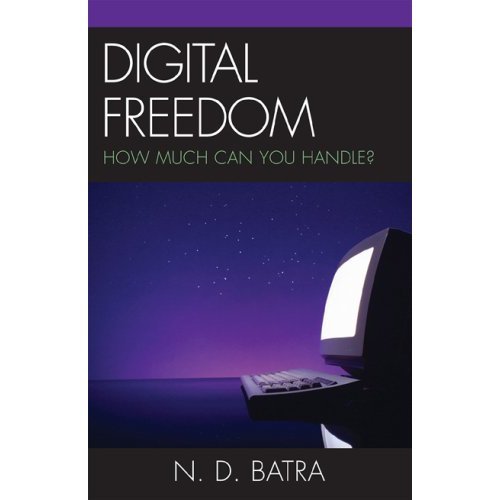Wednesday, October 13, 2004
Seductions of cyberspace
As the legend goes, on the Internet nobody knows whether a person is a dirty old man trying to seduce teenagers; a gender-swapping woman playing with big boys in a virtual MUD room; or a teenager posing as an expert. As a New Yorker cartoon by Peter Steiner quipped, “On the Internet nobody knows you’re a dog.” At least for sometime, that’s what a California teenager Marcus Arnold had tried to do a few years ago. Probably using his knowledge gained from television programs such Court TV or Judge Judy, and taking advantage of the pseudonymous freedom that a newly started knowledge sharing company AskMe had provided, Marcus turned himself into a legal expert and began to dole out free legal advice. His simple direct non-legalese approach to puzzling legal questions had a great appeal. Soon people began to call him at home seeking his legal advice. But the burden of fakery became too heavy for the fifteen-year-old boy and one day, he said, I am not what you think. Real lawyers poured scorn but the public rallied around him and he continued to give his non-expert common sense expertise on legal matters for sometime. AskMe closed its free Website in 2002 but at its height about 10 million registered visitors posted questions and answers on everything from Armageddon to Zen. The Internet has created a new media environment that not only enables people to communicate, discuss and exchange information, giver and receive feedback, but also provides an interactive collaborative environment in which words can become deeds and speech can become action. Networked computers, the building blocks of the Internet, are much more than mere productivity tools and informatics systems. Unlike the traditional media, they are capable of creating cyber-environment that can be designed to be persuasive, that can motivate people to act and change their social behaviors. Stanford University researchers call this rhetorical concept as Captology, which according to BJ Fogg “focuses on the planned persuasive effects of computer technologies.” (http://captology.stanford.edu). What I am saying is this: It may be the next challenge for software programmers in Kolkata or Bangalore to design virtual environments to motivate people, for example, not to drink and drive, to have healthy sexual behavior, to avoid pregnancy. Professor Lawrence Lessig of Stanford Law School has expounded the view that computer codes have the potential force of law, that programmers could bypass Congress and in a manner speaking take laws into their own hands. But the rhetoric of software design, the persuasive code that entices, builds relationships, arouses and fulfills desires and keeps the users coming back has not been fully explored in areas other than cybersex and virtual reality Internet games like multi-user dungeons (MUDs). There may be fortune in developing codes that persuade the user to change his attitude, behavior and actions. The strength of the Internet is its interactivity, its ability to respond and give instant feedback. Feedback not only regulates the flow of communication but also gives some of the control back to the receiver of the message. Two persons in conversation establish a dynamic relationship to create shared meanings. Human communication is essentially a transaction that takes place effectively if people have or can create a common field of experience. Jehadis, for example, share each other’s mental model of the Islamic Paradise, and for them suicide becomes a door to that mental image of everlasting beauty. Persuasion works through sharing of mental models. The Internet makes it easy to share mental models whether they are of instant entrance to the Paradise through suicide bombing, buying and selling on a virtual platform such, or sharing knowledge as companies like AskMe do. Internet communication can transcend face-to-face communication, can be very persuasive, and in certain circumstances is even more desirable. Lack of face-to-face cues, physical appearance and vocal inflections, which might arouse skepticism (that’s how Marcus Arnold got away with it), are absent in Internet communication especially when it is time delayed (asynchronous) such as in e-mail or question-answer Websites. Selective self-presentation makes it possible for people to open themselves up to others, which they would hesitate to do in face-to-face conversation for fear of contradiction and lack of control. Even in chat rooms and instant messaging, communication can become what one researcher, JB Walther, called as “hyperpersonal,” that’s, socially more desirable than we are likely to experience face-to-face. It allows the play of fantasy partly to compensate for the absence of aural and visual information that gestures and voice create in interpersonal encounters. Fantasy lowers our guards and makes cyberspace so seductively persuasive—and dangerous. So many teenagers go astray in chatrooms because cyberspace lets them assume fake identities and gives them freedom to pretend what they fancy themselves to be. Some of them become victims of conmen and predators, who too assume identities desirable for their teenage victims. The playfulness of virtual environment, an environment of “Be what you want to be,” creates a pleasurable experience, a sensuous flow, in which we feel control of our environment that real life might deny us.
(ND Batra is Professor of Communications, Norwich University, Vermont.)
Tuesday, October 12, 2004
Seductions of cyberspace
at Tuesday, October 12, 2004 Posted by Narain D. Batra
Subscribe to:
Post Comments (Atom)

No comments:
Post a Comment